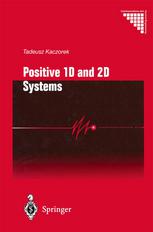

Most ebook files are in PDF format, so you can easily read them using various software such as Foxit Reader or directly on the Google Chrome browser.
Some ebook files are released by publishers in other formats such as .awz, .mobi, .epub, .fb2, etc. You may need to install specific software to read these formats on mobile/PC, such as Calibre.
Please read the tutorial at this link: https://ebookbell.com/faq
We offer FREE conversion to the popular formats you request; however, this may take some time. Therefore, right after payment, please email us, and we will try to provide the service as quickly as possible.
For some exceptional file formats or broken links (if any), please refrain from opening any disputes. Instead, email us first, and we will try to assist within a maximum of 6 hours.
EbookBell Team

0.0
0 reviewsIn the last decade a dynamic development in positive systems has been observed. Roughly speaking, positive systems are systems whose inputs, state variables and outputs take only nonnegative values. Examples of positive systems are industrial processes involving chemical reactors, heat exchangers and distillation columns, storage systems, compartmental systems, water and atmospheric pollution models. A variety of models having positive linear system behaviour can be found in engineering, management science, economics, social sciences, biology and medicine, etc. The basic mathematical tools for analysis and synthesis of linear systems are linear spaces and the theory of linear operators. Positive linear systems are defined on cones and not on linear spaces. This is why the theory of positive systems is more complicated and less advanced. The theory of positive systems has some elements in common with theories of linear and non-linear systems. Schematically the relationship between the theories of linear, non-linear and positive systems is shown in the following figure Figure 1.